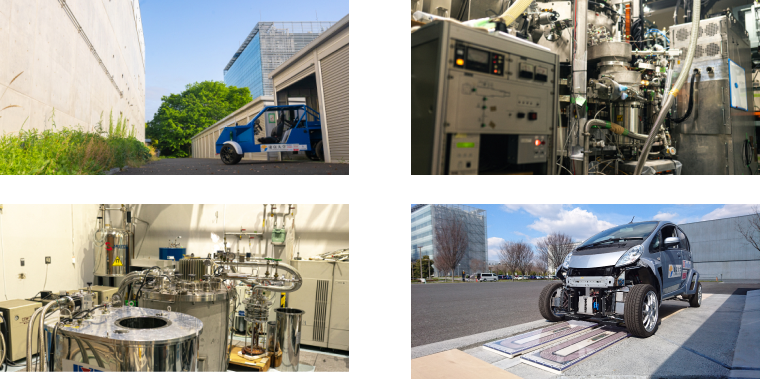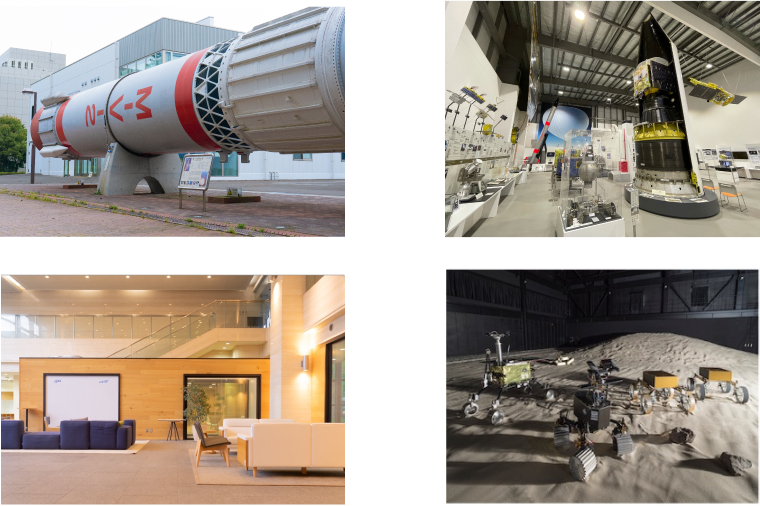Facilities and Equipment
World-class facilities and equipment are available at the Hongo, Kashiwa, Komaba, and Sagamihara campuses, including Building 2, which is our base of studies, as well as the newly constructed Building 3.
Hongo Campus
The main laboratories of the department are located in Hongo, and lectures for 3rd and 4th year students are also held at Hongo.
Faculty of Engineering Building 2
Faculty of Engineering Bldg. 2 is located in the left side of the Yasuda Auditorium. Many lectures are held at the Faculty of Engineering Building 2. Lecture rooms are equipped with power outlets at each seat and Wi-Fi, as well as student study rooms and a library. There are also restaurants in the building, such as a Subway and a long-established Western-style restaurant called Matsumotoro.
Faculty of Engineering Building 3
Faculty of Engineering Building 3 is a relatively new building completed in 2015. It is connected to Building 2 by a connecting corridor. It houses laboratories for electrical research, as well as rooms for conducting experiments on electric power systems.
Laboratory
In the 3rd year, students have the opportunity to experience a variety of experiments three times a week. The laboratories are located in Faculty of Engineering Buildings 2, 3, and several buildings in the Asano Section.

Kashiwa Campus
Kashiwa Campus has a large site utilized for experiments and other activities. It is also an advanced college town where town-wide demonstration experiments are conducted.
Transdisciplinary Sciences Laboratory and garage
Large-scale experimental equipment is located in the Transdisciplinary Sciences Laboratory on the left in the left photo, where experiments and research related to electric power equipment and energy are conducted. The garage is located next to the building and is the center for electric vehicle research on the Kashiwa Campus.
Plasma experimental equipment
One of the large facilities in the Transdisciplinary Sciences Laboratory is the plasma experimental equipment, which aims for the early realization of fusion power generation. In order to realize a high-performance core, it is necessary to take advantage of the properties of plasma itself, and this is why various ideas are being developed and verified using this equipment.
Superconductivity and cryogenic experimental equipment
In the front of the photo on the right is a superconducting magnet having a room temperature space with a diameter of 30 cm. A high magnetic field is applied to the material to measure its superconducting properties. Next to it is cryogenic cooling equipment, which can cool materials and devices by supplying cryogenic helium gas at 20 to 30 K. By using this equipment, we can conduct experiments that will lead to the application of superconductivity phenomena to devices and systems.
Trial drive field
This field is for the test-running of electric vehicles. The field is equipped with a dynamic power feeder with embedded coils that can wirelessly supply power to a running electric vehicle. This field is designed to conduct various experiments such as power and motion control of electric vehicles through testing an in-wheel motor car equipped with a coil that can receive electric power.

Komaba Campus
Komaba Research Campus is also called Komaba II Campus. The Institute of Industrial Science and the Research Center for Advanced Science and Technology are located on this campus.
Blocks B-F
Blocks B through F are aligned. The Institute of Industrial Science is composed of research divisions 1 through 5, all of which are located in these blocks. Of these, electrical engineering belongs to division 3, and is mainly conducted in Block E.
Block S
This is the S Block of the Institute of Industrial Science Research Building. It houses the exhibition rooms of the "Design Lab," which conducts research on industrial design. The building also has an open structure, and meetings and lectures are often held here.
Atrium
The atrium is located on the first basement floor of blocks B-F. The 200-meter-long space is used for exhibitions and other events, and is also used for experiments using drones.
Building of the Research Center for Advanced Science and Technology (RCAST)
This is the clock tower of Building 13 and RCAST Building 3 viewed from the courtyard. The clock tower of Building 13 is the symbol of RCAST and used to be the main building of the Institute of Aeronautical Research. This building is now used for administrative offices and other purposes. Buildings 3 and 4, completed as part of the new campus project, house the laboratories of RCAST.

Sagamihara Campus
Located at JAXA's Institute of Space and Astronautical Science. The Department of Electrical Engineering and Information Systems (graduate school) also has faculty members who conduct research on space science, and they are based here in Sagamihara.
M-V Launch Vehicle No. 2
You can see the real second M-V rocket at the outdoor. This is a large rocket with all-stage solid propellant developed by the Institute of Space and Astronautical Science. It has successfully launched six rockets up to now and has made a great contribution to space science in Japan. The asteroid explorer "Hayabusa" was launched by the M-V Launch Vehicle No. 5.
Building for Space Science Exploration and Interchange
This is a building for space science exploration and interchange. While it serves as an exhibition room of the Institute of Space and Astronautical Science, it is also a place for interaction with various people, including JAXA staff and people from universities, research institutes, and companies. The “Hayabusa2” press conference was also held here.
Space Exploration Field
This is a space exploration field. In this test site, the surface topography and lighting conditions of the moon and planets can be simulated. It enables performance and function verification, operational tests, and cooperative tests of multiple robots using real-sized exploration robots and landers, etc. Japan's lunar lander SLIM and the small lunar exploration rover equipped with SLIM were also tested on this site.
Main Building Lobby
This is the first floor lobby of the main building of the Institute of Space and Astronautical Science. The Sagamihara Campus is not only a base for space science research, but also a place where a great deal of wisdom is gathered through joint use by universities across Japan and acceptance of researchers from around the world. The lobby on the first floor of the main building includes a space for interaction and a conference room, where diverse communication takes place. Such connections among diverse people will create many innovations for the development of space science.
